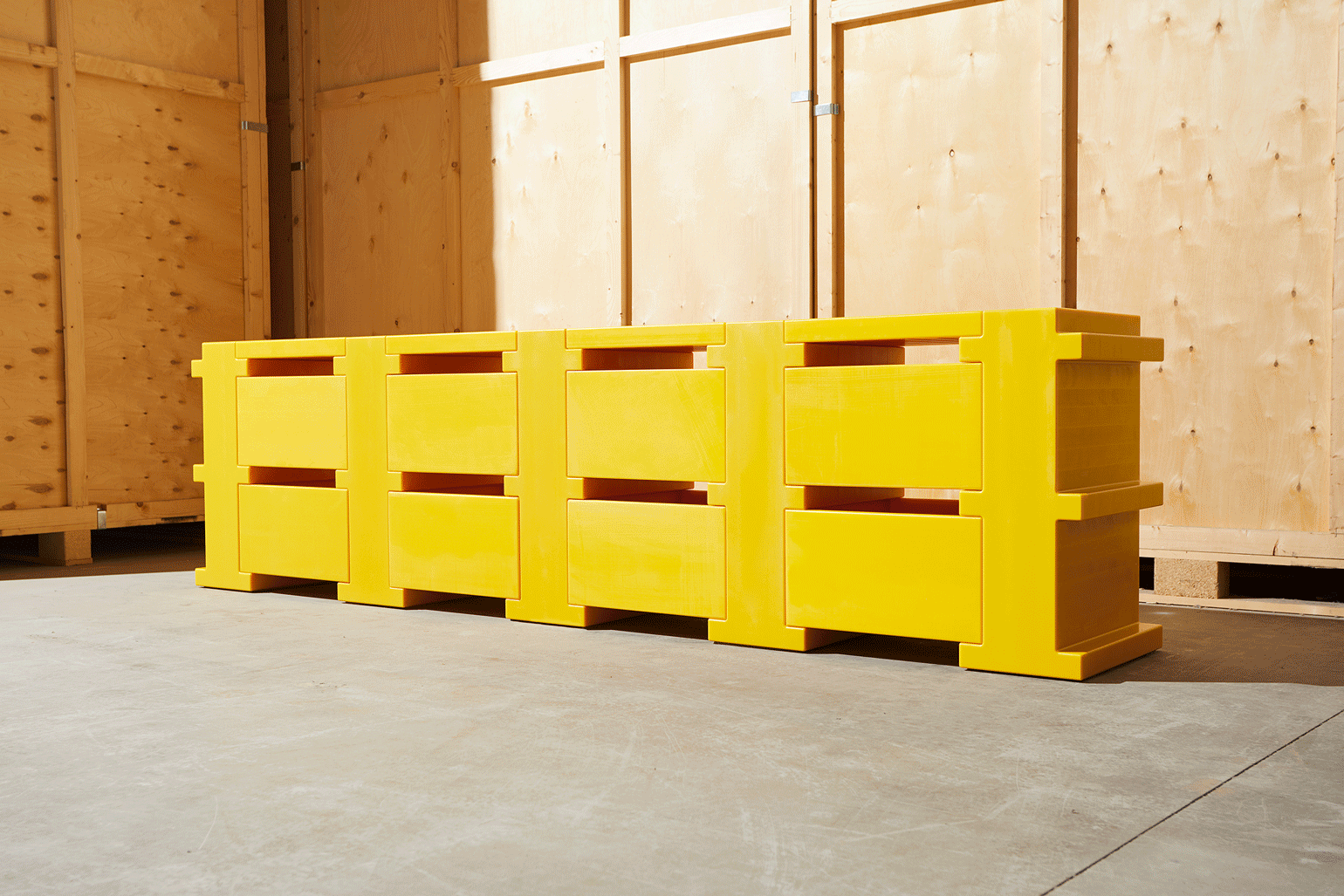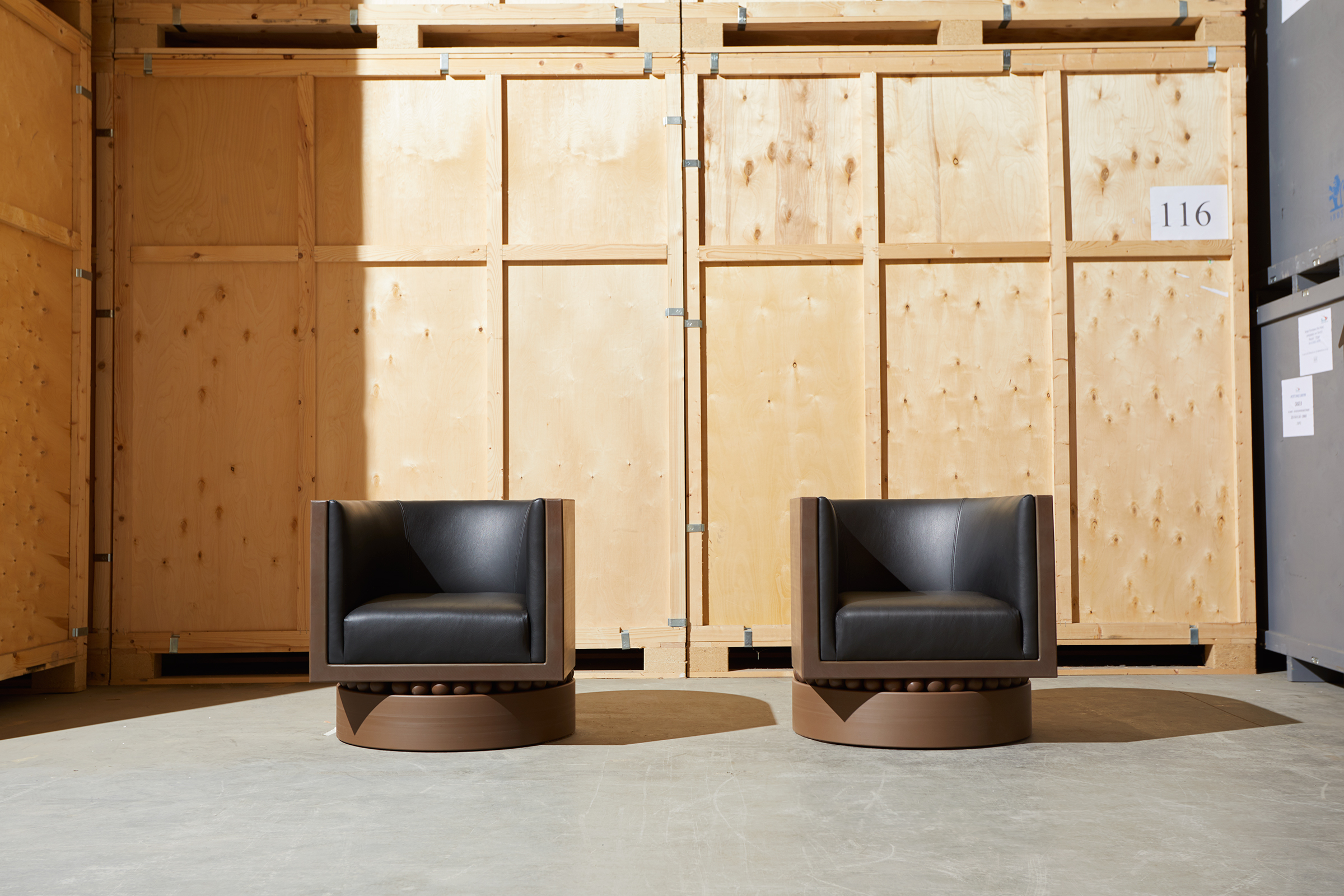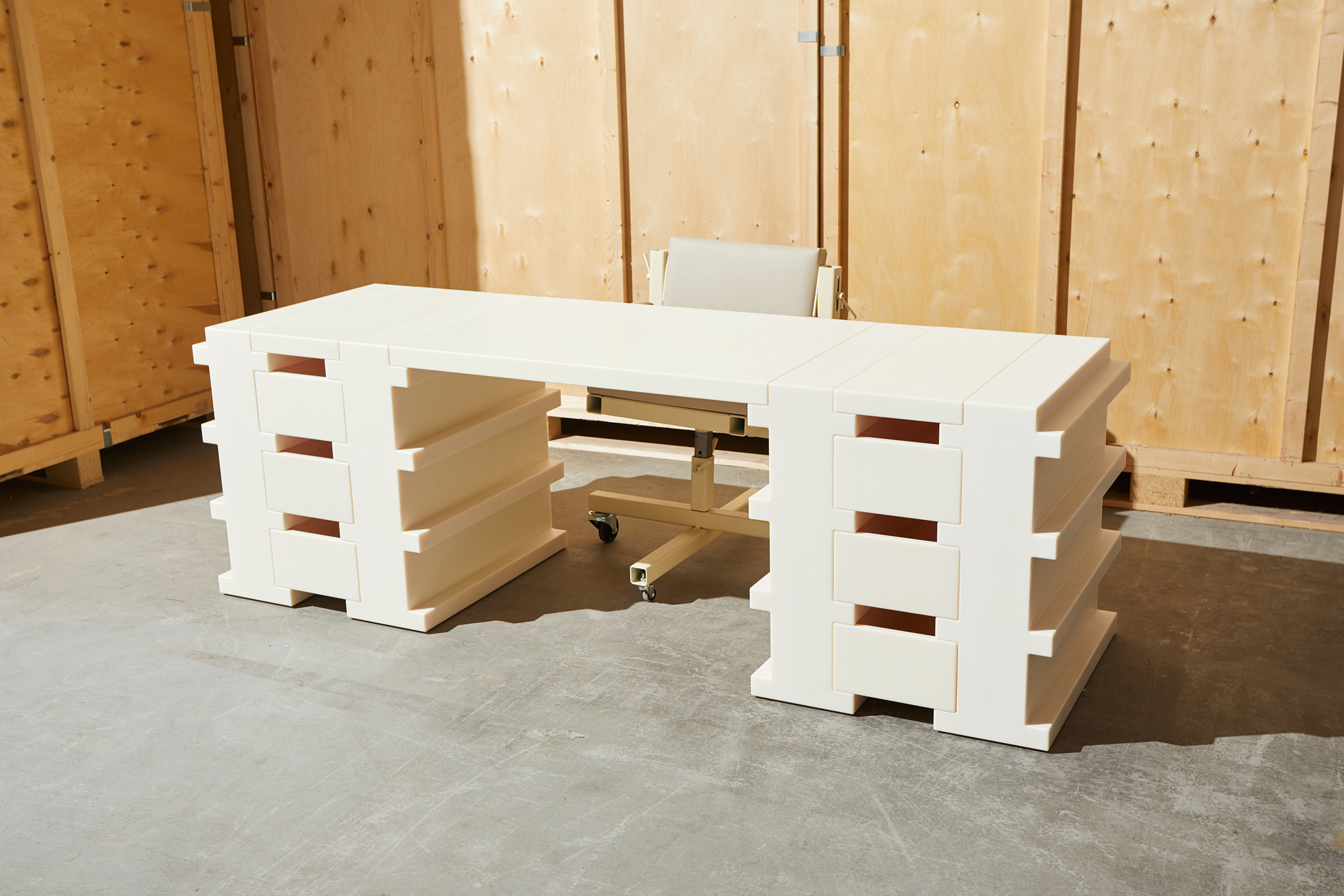Philippe Malouin’s nostalgic industrial office furniture for Salon 94 Design
An exclusive look at the London-based designer’s first office furniture range to debut at Design Miami/Basel

Steel wire rings, rubber and nylon are just some of the raw materials designer Philippe Malouin has been working with lately. He’s not uprooting his design career and turning to factory work, instead he has been rustling up his first collection of office furniture for Salon 94 Design, all made with industrial materials, that will launch at Design Miami/Basel next week (11-16 June).
This collaboration follows on from Design Miami 2017. Salon 94 Design co-founder Paul Johnson spotted the brutalist concrete Core bench by Malouin (Wallpaper* Designer of the Year in 2018, and a 2019 judge) that was created for the Kalejdohill project in Sweden. Johnson was swiftly keen to create a version for the gallery, which showcased at the Floridian fair. There is a similar type of robust energy in this vibrant collection, which uses an assortment of techniques: from welding to casting, to develop the modern workplace pieces.

‘We were interested in studying office archetypes and reinterpreting them using industrial materials and processes,’ says Malouin. Taking into consideration the pacy evolution of office environments, from executive spaces in skyscrapers to the hyper-networking co-working culture, the London-based designer has realised experimental forms including a translucent sculptural seat in rubber and a chair in steel that riffs off the classic executive office chair in its structure, with its nuts and bolts exposed. A monolithic cargo container-style sideboard packs a punch too, but the fact that it exists in a bright, sunny yellow tone, and is made out of nylon, adds a playful slant.
‘So many offices are grey and plain. Some vibrancy is very important,’ Malouin explains. But these colours were not artificially injected into the collection, they are indicative of the process. ‘The colours are a direct result from working with these specific industrial materials as they are standard colours. I thought it was important to use the standard colours materials come in in order to communicate process’.

The collection could deck out an entire office; smaller tools come in the form of sturdy pen pots and bookends in steel, wall hooks and even a 1970s-esque nylon telephone. Malouin’s vision for the office offers a fresh take on archetypes, edging these away from grayscale and corporate.
So many offices are grey and plain. Some vibrancy is very important
As for his own office? ‘[It's] a jumble of materials and samples, and experiments, and it is packed to the brim! It has lots of plants and nice daylight’. Hopefully more modern masterpieces we get to experience soon.


INFORMATION
Industrial Office is on view 11–16 June. For more information, visit the Salon 94 Design website
ADDRESS
Receive our daily digest of inspiration, escapism and design stories from around the world direct to your inbox.
Hall 1 Süd
Messe Basel
Switzerland
Sujata Burman is a writer and editor based in London, specialising in design and culture. She was Digital Design Editor at Wallpaper* before moving to her current role of Head of Content at London Design Festival and London Design Biennale where she is expanding the content offering of the showcases. Over the past decade, Sujata has written for global design and culture publications, and has been a speaker, moderator and judge for institutions and brands including RIBA, D&AD, Design Museum and Design Miami/. In 2019, she co-authored her first book, An Opinionated Guide to London Architecture, published by Hoxton Mini Press, which was driven by her aim to make the fields of design and architecture accessible to wider audiences.
-
 This cult Los Angeles pop-up restaurant now has a permanent address
This cult Los Angeles pop-up restaurant now has a permanent addressChef Brian Baik’s Corridor 109 makes its permanent debut in Melrose Hill. No surprise, it's now one of the hardest tables in town to book
-
 French bistro restaurant Maset channels the ease of the Mediterranean in London
French bistro restaurant Maset channels the ease of the Mediterranean in LondonThis Marylebone restaurant is shaped by the coastal flavours, materials and rhythms of southern France
-
 How ethical is Google Street View, asks Jon Rafman in Copenhagen
How ethical is Google Street View, asks Jon Rafman in CopenhagenIn 'Report a Concern - the Nine Eyes Archives' at Louisiana Museum of Art, Copenhagen, Jon Rafman considers technology's existential implications
-
 Step inside this resilient, river-facing cabin for a life with ‘less stuff’
Step inside this resilient, river-facing cabin for a life with ‘less stuff’A tough little cabin designed by architects Wittman Estes, with a big view of the Pacific Northwest's Wenatchee River, is the perfect cosy retreat
-
 Remembering Robert A.M. Stern, an architect who discovered possibility in the past
Remembering Robert A.M. Stern, an architect who discovered possibility in the pastIt's easy to dismiss the late architect as a traditionalist. But Stern was, in fact, a design rebel whose buildings were as distinctly grand and buttoned-up as his chalk-striped suits
-
 Own an early John Lautner, perched in LA’s Echo Park hills
Own an early John Lautner, perched in LA’s Echo Park hillsThe restored and updated Jules Salkin Residence by John Lautner is a unique piece of Californian design heritage, an early private house by the Frank Lloyd Wright acolyte that points to his future iconic status
-
 The Architecture Edit: Wallpaper’s houses of the month
The Architecture Edit: Wallpaper’s houses of the monthFrom wineries-turned-music studios to fire-resistant holiday homes, these are the properties that have most impressed the Wallpaper* editors this month
-
 The Stahl House – an icon of mid-century modernism – is for sale in Los Angeles
The Stahl House – an icon of mid-century modernism – is for sale in Los AngelesAfter 65 years in the hands of the same family, the home, also known as Case Study House #22, has been listed for $25 million
-
 Houston's Ismaili Centre is the most dazzling new building in America. Here's a look inside
Houston's Ismaili Centre is the most dazzling new building in America. Here's a look insideLondon-based architect Farshid Moussavi designed a new building open to all – and in the process, has created a gleaming new monument
-
 Frank Lloyd Wright’s Fountainhead will be opened to the public for the first time
Frank Lloyd Wright’s Fountainhead will be opened to the public for the first timeThe home, a defining example of the architect’s vision for American design, has been acquired by the Mississippi Museum of Art, which will open it to the public, giving visitors the chance to experience Frank Lloyd Wright’s genius firsthand
-
 Clad in terracotta, these new Williamsburg homes blend loft living and an organic feel
Clad in terracotta, these new Williamsburg homes blend loft living and an organic feelThe Williamsburg homes inside 103 Grand Street, designed by Brooklyn-based architects Of Possible, bring together elegant interiors and dramatic outdoor space in a slick, stacked volume